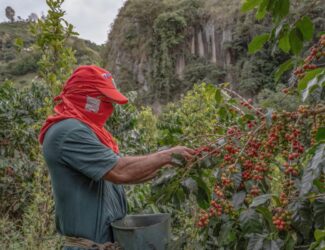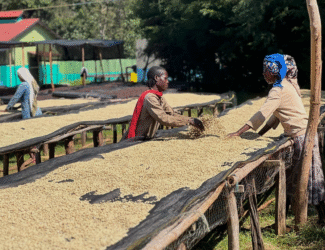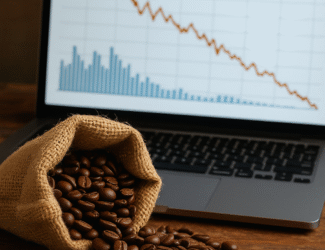
University of Pennsylvania Scientists Discover a More Efficient Way to Brew Stronger Coffee Using Pour-Over Method
As global coffee prices rise and sustainability becomes a growing concern, scientists from the University of Pennsylvania have unveiled new research showing that a carefully controlled pour-over brewing technique can produce stronger coffee using fewer beans. Published in the journal Physics of Fluids, the study introduces a physics-based understanding of how water interacts with coffee grounds—offering both home brewers and industry professionals a smarter, more sustainable approach to coffee preparation.
Scientific Discovery in a Coffee Cup
Led by Dr. Arnold Mathijssen, the research team investigated the fluid dynamics involved in pour-over coffee brewing. Using high-speed cameras and laser imaging, the team replaced coffee grounds with transparent silica-gel beads inside a glass dripper to simulate and visualize what normally remains hidden in a cup of coffee. They discovered that when water is poured from a precise height in a controlled stream, it causes small “avalanches” within the coffee bed, promoting better mixing and extraction of flavor compounds.
“These miniature avalanches help water reach deeper layers of the coffee bed more evenly,” explained Dr. Mathijssen. “It’s not just a culinary trick—it’s physics in action.”
Stronger Coffee With Fewer Beans
The implications are significant. The researchers found that the enhanced extraction enabled by the pour-over technique allows brewers to use up to 10% fewer coffee grounds while still achieving a strong, flavorful cup. Tests using real coffee and measurements of total dissolved solids (TDS) confirmed that coffee brewed with these optimized conditions retained or even exceeded the strength of conventionally brewed coffee.
The study emphasizes three key variables for optimal results:
-
Pouring height: Approximately 30 centimeters (12 inches) to allow for sufficient jet force.
-
Flow control: A steady, laminar stream to avoid splashing or early jet breakup.
-
Brew time: Between 2.5 and 4 minutes to allow complete caffeine extraction without overheating.
Cleaner Coffee, Better Taste
The researchers’ findings also support the well-known advantage of paper filters in pour-over brewing: they retain oils and micro-particles that can make coffee bitter or muddy in flavor. The result is a cleaner, brighter cup with reduced lipid content—up to ten times lower than coffee made using a French press or metal filter.
Chef and nutrition expert Sergey Leonov, founder of the healthy eating academy “ZOZhigai,” agrees with the findings. “Pour-over coffee not only delivers on taste but also has health benefits due to its cleaner composition,” he said. “Lower lipid content means a more balanced drink with fewer compounds that may negatively affect cholesterol.”
A Response to Market and Climate Pressures
With Arabica coffee prices reaching multi-year highs and climate change threatening yields in key producing regions, the timing of this research is critical. By demonstrating that more efficient brewing can reduce waste without compromising quality, the study offers both economic and ecological benefits.
“This research isn’t just about making a better cup of coffee—it’s about making the industry more resilient,” said Dr. Mathijssen.
Beyond the Café
The study’s implications extend beyond the coffee world. The insights into fluid dynamics and granular mixing could inform various fields, including soil erosion modeling, filtration systems, and even industrial waste-water processing. “What we’ve learned about coffee might help solve much bigger problems,” Dr. Mathijssen added.
Practical Takeaways for Coffee Enthusiasts
For those brewing at home or in specialty cafés, the team recommends:
-
Using a gooseneck kettle to control the water stream precisely.
-
Pouring from a height of about 30 cm to induce the beneficial mixing.
-
Keeping the stream steady and continuous to maintain laminar flow.
-
Reducing coffee usage by 10% and adjusting only if the flavor profile demands it.
Final Word
As the world searches for ways to reduce consumption while maintaining quality, this study reminds us that even something as simple as pouring water can be reimagined through science. The pour-over method, long favored by specialty coffee enthusiasts for its elegance and clarity, now has the scientific backing to prove it’s not just better—but smarter.
The full study, “Pour-over coffee: Mixing by a water jet impinging on a granular bed with avalanche dynamics,” is available in Physics of Fluids, April 2025 edition.






